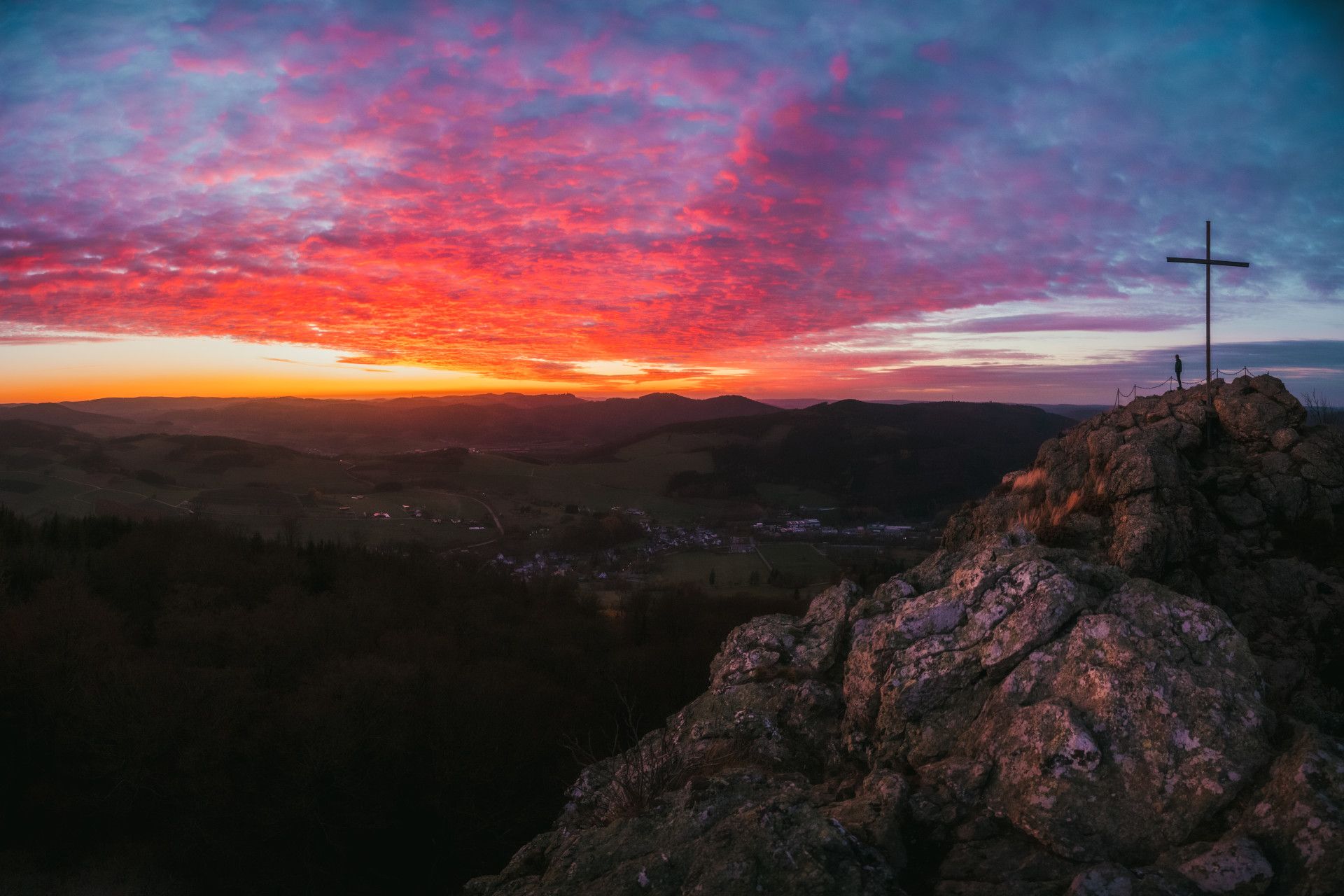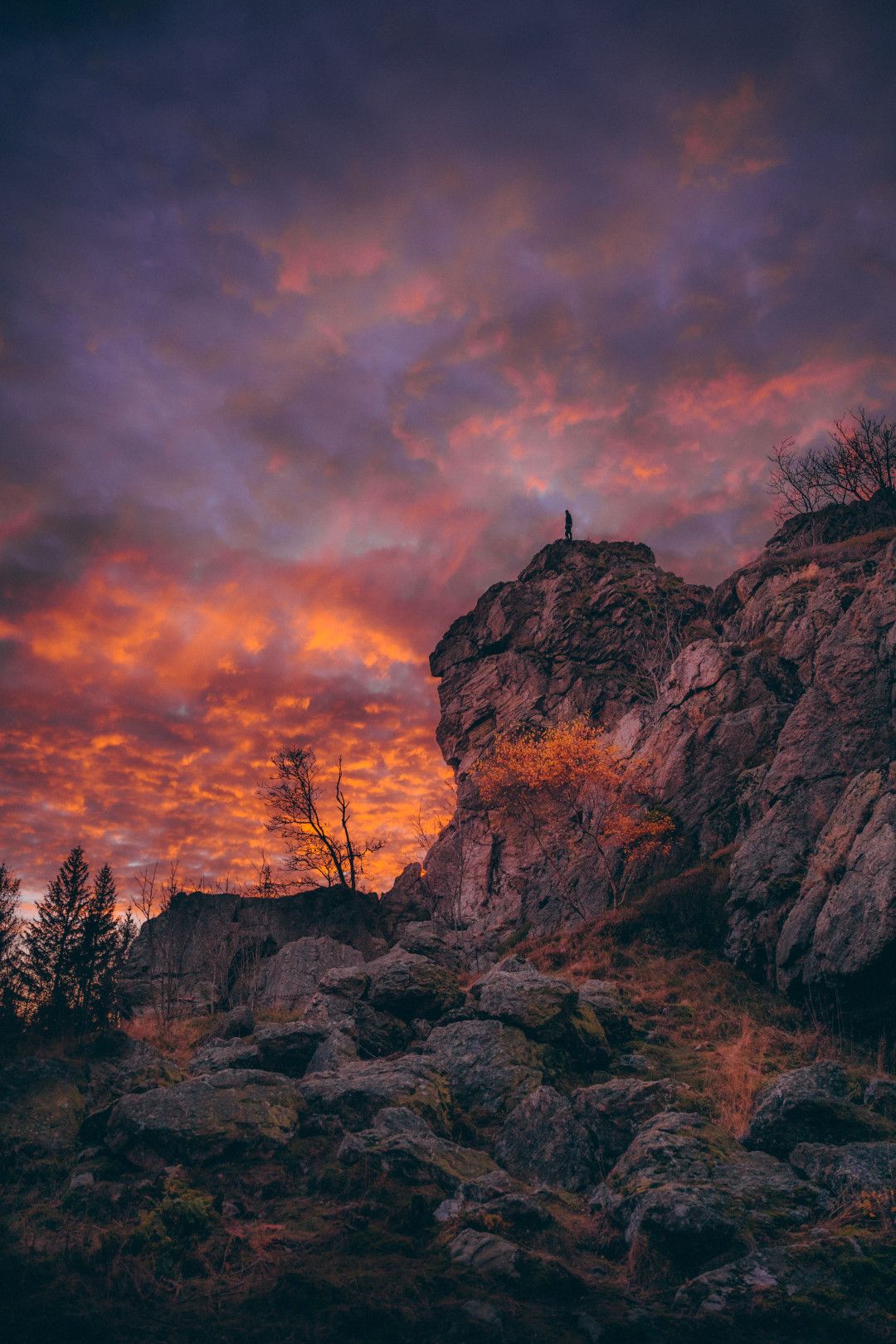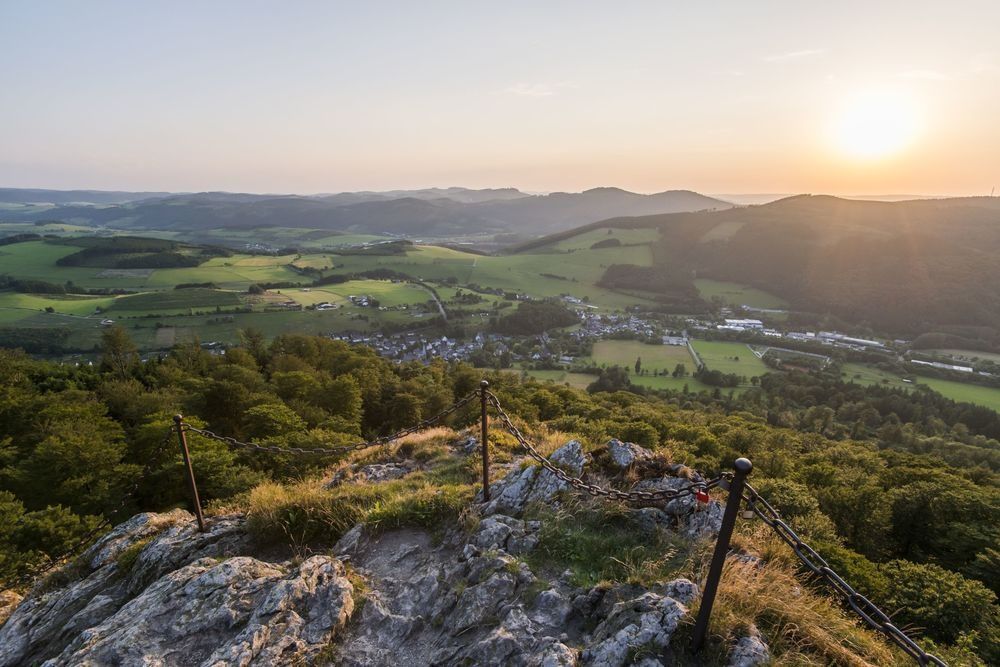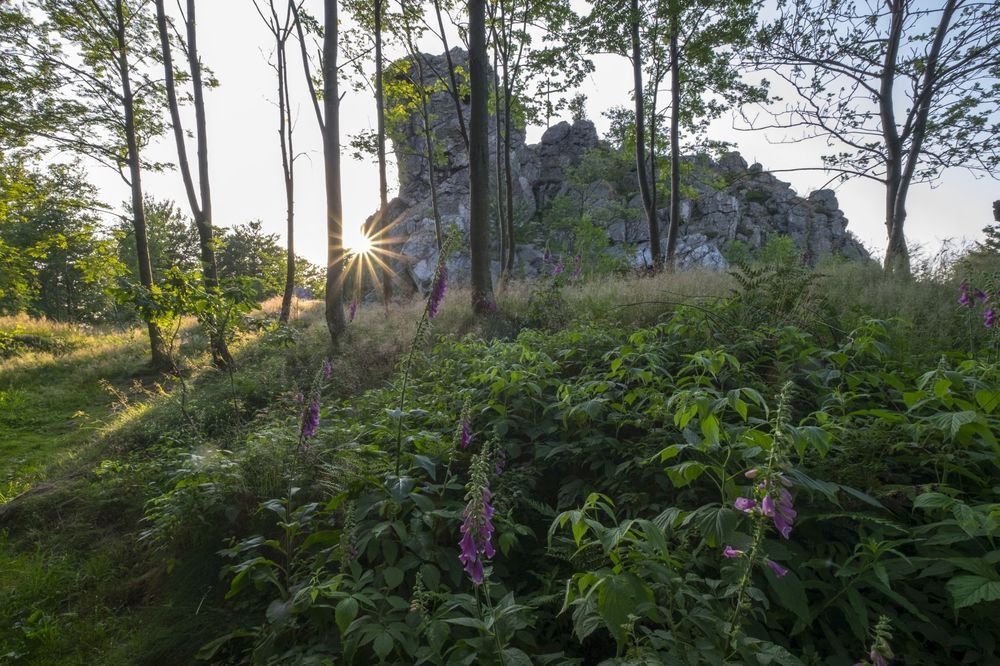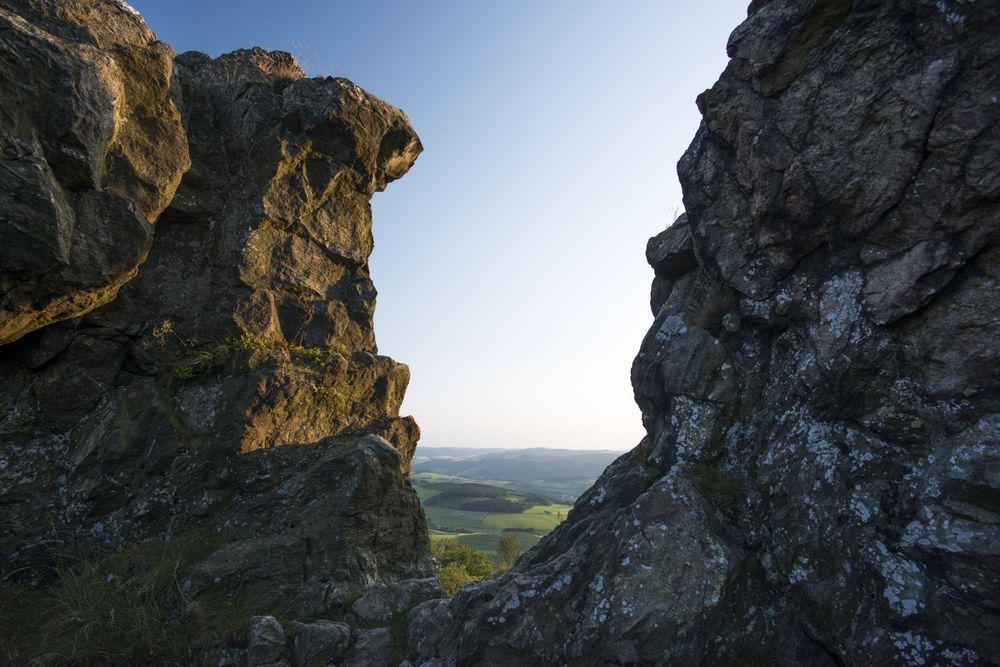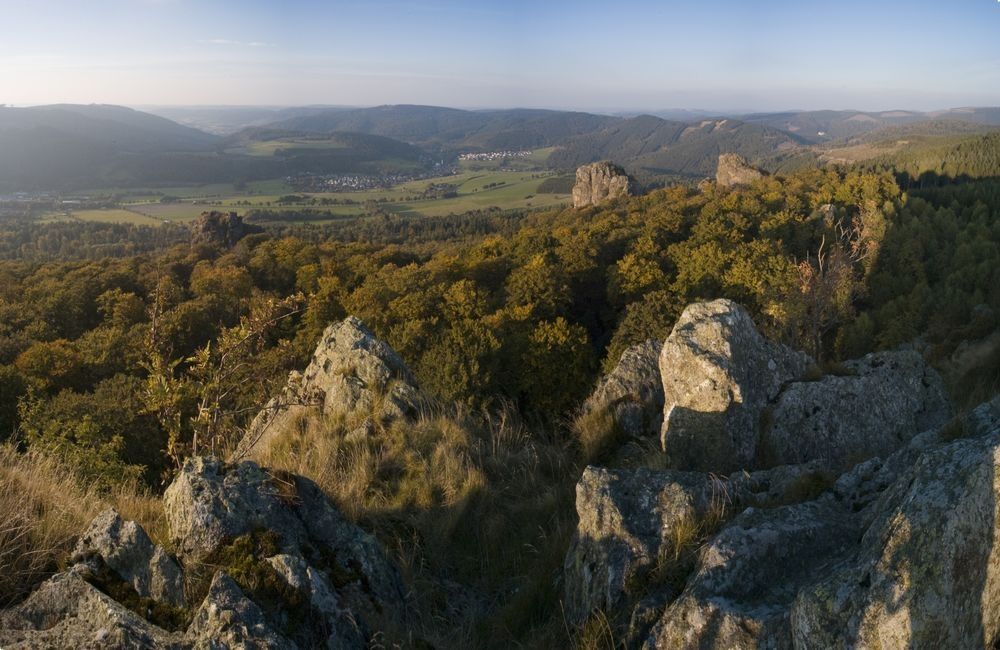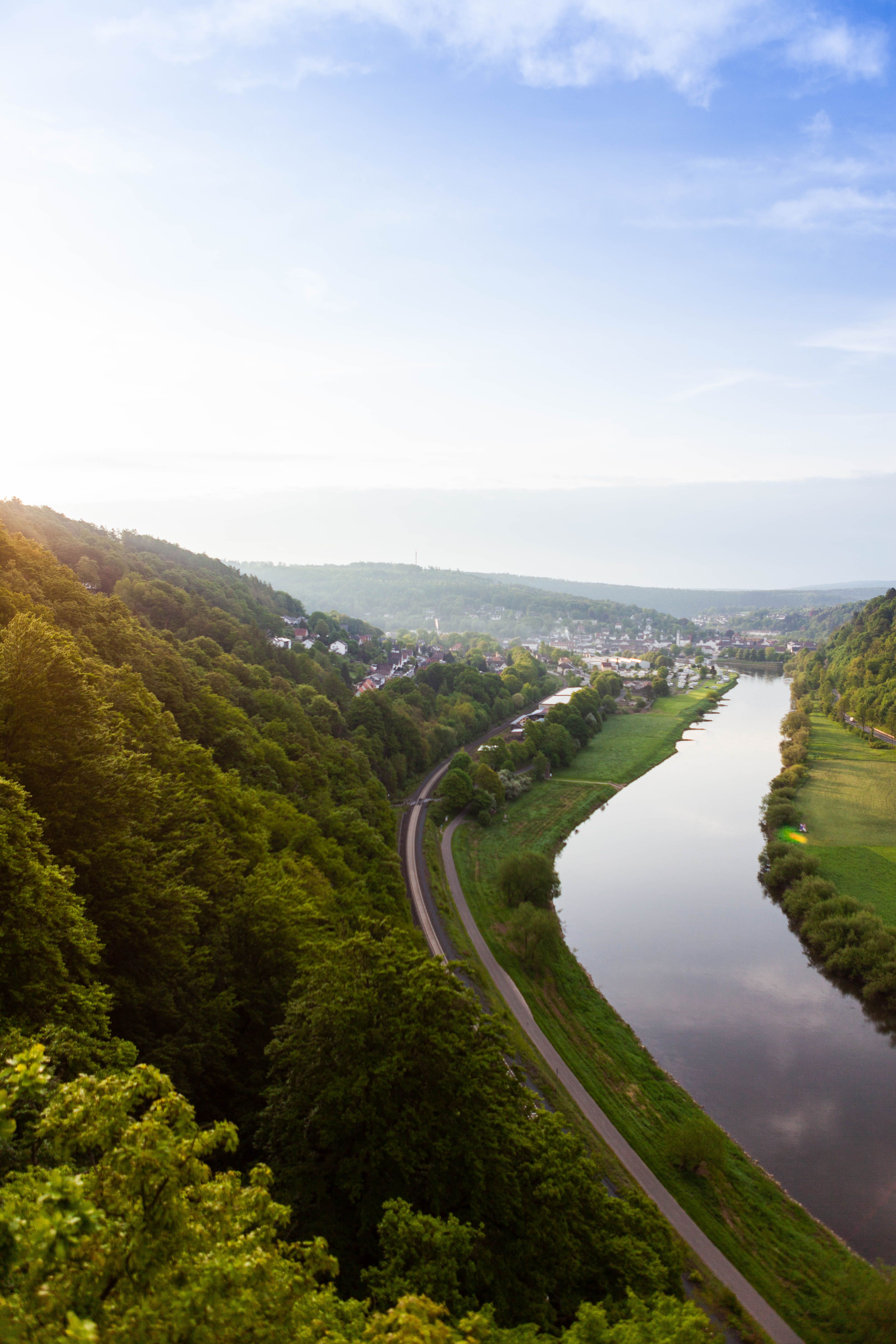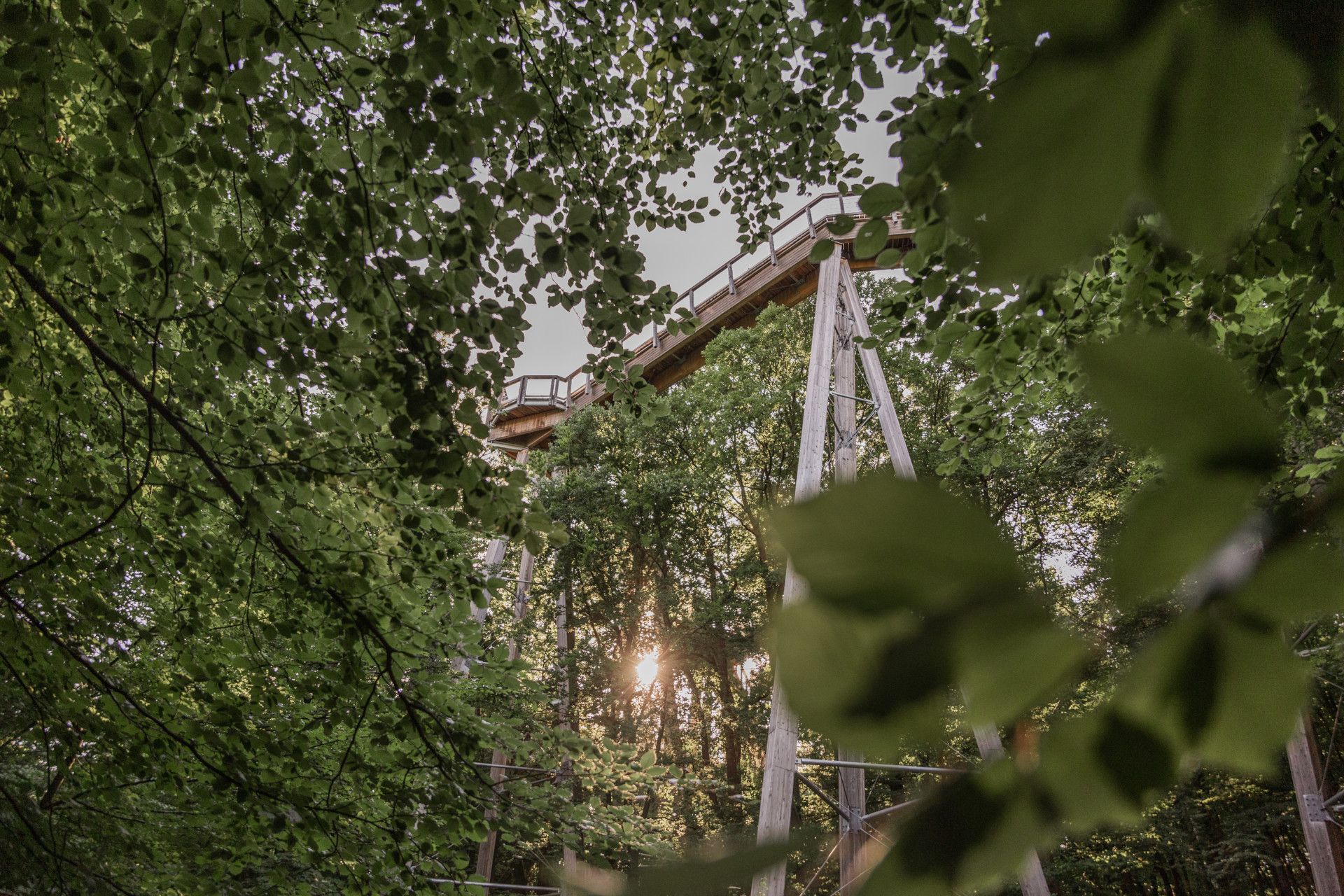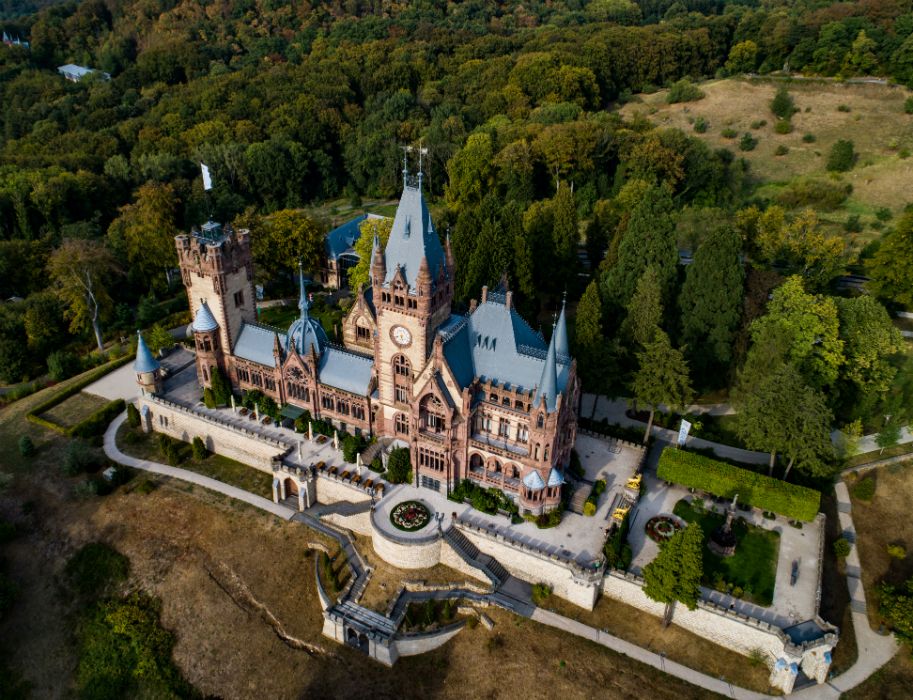The four Bruchhauser Stones, which tower up to 92 meters high into the sky on the Istenberg near Olsberg, were formed millions of years ago by volcanoes, erosion and folding of the earth's layers - and are a fascinating excursion destination not only for fans of geological history. Rare animals such as eagle owls and falcons, which breed in the stones, and arctic-alpine plants not normally found in these areas make the Bruchhauser Steine a place of pilgrimage for natural history fans. Iron Age ramparts fascinate cultural historians, as finds indicate that there was an important place of worship here in pre-Christian times.
Climb to the summit cross
However, most visitors enjoy a short climb and the breathtaking view from the top. One of the four rocks can be climbed: A staircase carved into the rock leads up to the summit cross of the Feldstein, which at 45 meters above the ground is the lowest rock in the formation, but thanks to its location is also the highest point of the Isenberg.
Its three neighbors also have special features to offer: The highest rock, at 92 meters, was named Bornstein after an accumulation of water on the summit plateau, because Born means "spring". The 72-metre-high Ravenstein still shows traces of a volcanic eruption; solidified ash and magma "bombs" can be seen on its northern side. Finally, the 60-metre-high Goldstein owes its name to shimmering golden yellow quartz veins. It is sometimes called the "Great Elector" because of a rock formation that resembles the profile of the Great Elector in the Mark Brandenburg.
